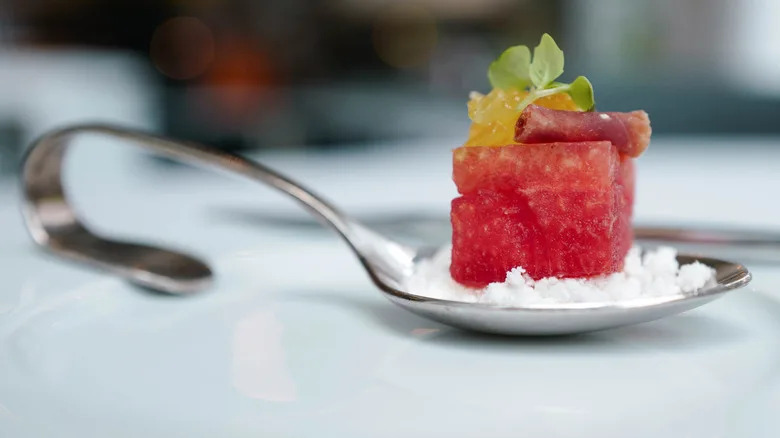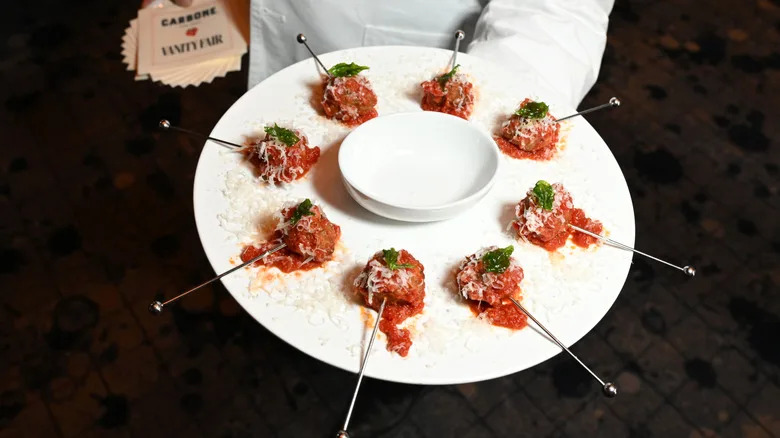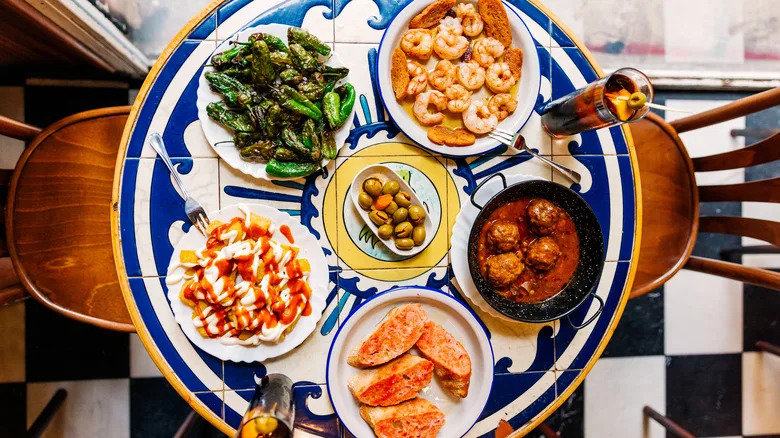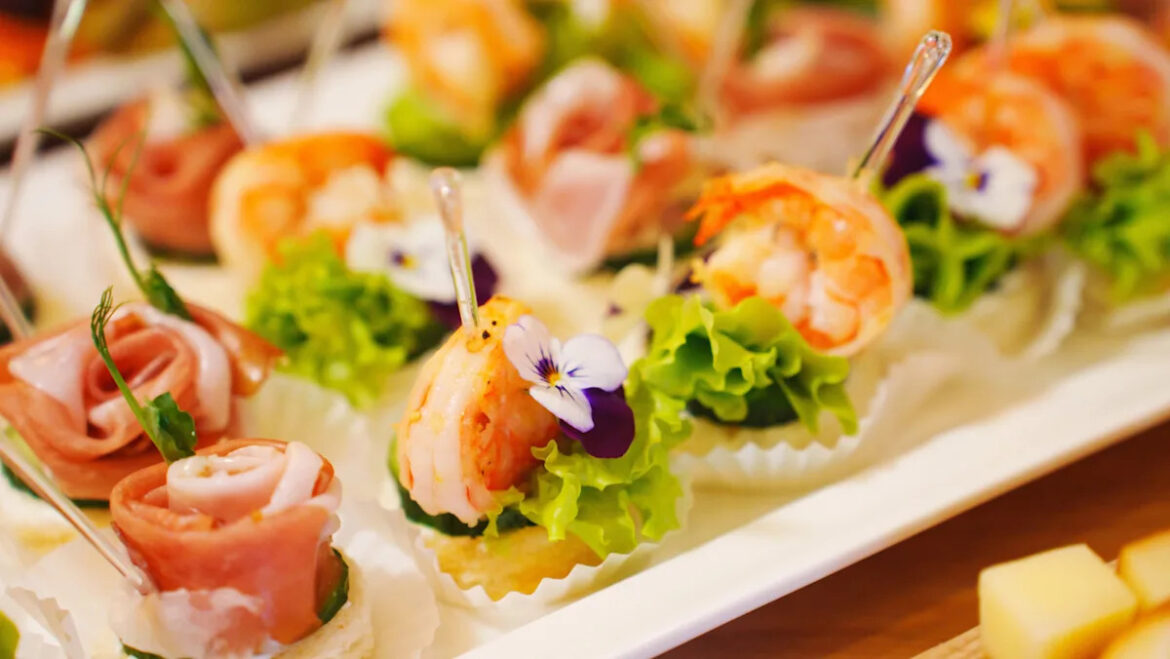Any dinner party worth talking about is going to have small bites to nibble on in between conversations. Sometimes platters of deviled eggs and crudites are laid out on the table, ripe for the taking, while other soirees will have bite-sized hors d’oeuvres being passed around the room. At more intimate gatherings prioritizing the meal, you might be served a small bite before the first course; an amuse-bouche. Those two French terms are often swapped for appetizer but they each have their own nuances. All three words refer to lighter bites eaten before the main course, but there’s a time and a place for each type of snack.
Feasting has been a means of celebration for centuries, but the Ancient Greeks were especially smitten with long drawn out dinners, always starting the meal with smaller bites. The practice carried over into Italy with antipasto, Spain with tapas, and zakuska in Russia. Just about every corner of the world adopted their own style of a pre-dinner snack, but only sometimes are they referred to as appetizers, and it has more to do with the setting than the food itself.
Read more: 13 International Dining Etiquette Rules We Should All Be Following
What Is An Amuse-Bouche?
Watermelon and meat amuse-bouche in small spoon – Alldgy/Getty Images
An amuse-bouche comes with the compliments of the chef, so it’s an extra mini course, not written on the menu. The French term translates to “it amuses the mouth” and that’s what it’s designed to do. Not only is the small bite a delicious creation straight from the chef, but it’s a free one, and it should feel like it was designed just for you. The refined bites come as a surprise, which puts diners in a good mood right off the bat while also showcasing the chef’s techniques and creativity. This little pre-dinner bite could be anything from a delicate spoon of pate to a single fried squash blossom. As a French chef, Thomas Keller always sends out an amuse-buche at his three-Michelin-star restaurant, The French Laundry in California, such as his iconic cornet, a pastry cone filled with salmon tartare. For chefs, it’s both a gesture of hospitality and a great way to experiment with new flavors.
Prix-fixe dinners and tasting menus offer the luxury of a decision-free evening, and amuse-bouches serve a similar comfort. It’s an opportunity to taste something special you may not have ordered otherwise. They’re common in five-star restaurants, as they serve as a sign of appreciation for spending hundreds of dollars on the evening. The French-influenced custom took off in the 1970s, when chefs began emphasizing lighter, more artful dishes during the rise of nouvelle cuisine.
What Are Hors D’oeuvres?
Person passing hors d’oeuvres on platter – Bryan Bedder/Getty Images
Hors d’oeuvres are also small bites, but usually center more around eating while socializing and conversing. They’re often found at staffed cocktail parties and events, passed around the room on a platter. Presented with a napkin and some sort of toothpick or disposable utensil, hors d’oeuvres are finger foods that can easily be enjoyed while moving around the room.
When compared to appetizers and an amuse-bouche, hors d’oeuvres feel the most removed from the meal itself. The term translates directly to “outside of work,” which referred to a side-building such as a gazebo up until its culinary influence in the 17th century. These petite snacks were served during cocktail hour and were intended to keep guests entertained and mildly satiated while the main course finished simmering. They’re typically served to guests upon arrival while people are still mingling and saying their hellos, oftentimes in a separate room from where dinner is even taking place.
Other than not requiring a fork and knife, there are no rules when it comes to the French-inspired snacks. Classics like deviled eggs and tartlets can be expected, but you can surprise your guests with hors d’oeuvres like crispy okra and halloumi fries.
What Are Appetizers?
Selection of appetizers on a restaurant table including prawns, padron peppers, olives, bread – Alexander Spatari/Getty Images
Coming from the Latin word appetitus, appetizer means “to long for,” and in this case, it’s referring to the anticipation of dinner. Appetizers, arguably the most common term associated with pre-dinner snacks, serve a specific purpose. They’re a way to curb hunger while waiting for the main course to arrive, whether that’s at a restaurant or at the kitchen table at home.
There are certain foods that can almost always be found under appetizers on American menus, like mozzarella sticks and jalapeño poppers. These are eaten at the table as an initial course. Fine dining establishments incorporate appetizers as well, they’ll just label them with a fancier turn of phrase, like first course or starters. Unlike pre-plated hors d’oeuvres and unexpected amuse-bouches, appetizer orders are chosen by the diner. They tend to be on the bigger side and are often designed for sharing, whereas the French-influenced bites are individually portioned.
Read the original article on Tasting Table.


Dining and Cooking